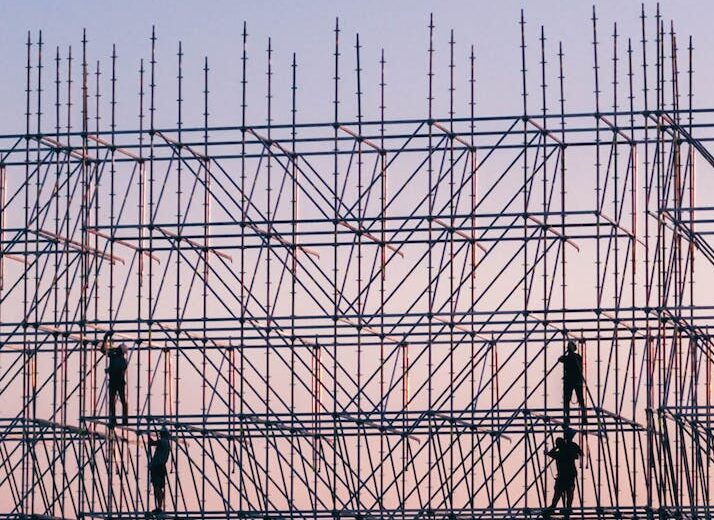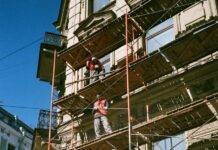
Scaffolding Basic Safety Knowledge
Scaffolding Basic Safety Knowledge : In the world of construction, scaffolding serves as the backbone of any project. It provides essential support for workers and materials, enabling them to reach great heights and complete their tasks safely and efficiently. However, working with scaffolding also comes with its fair share of risks. To ensure a secure work environment, it’s crucial for everyone involved to possess a solid understanding of scaffolding basic safety knowledge. In this article, we’ll delve into the key principles and precautions that should be taken to prevent accidents and injuries while working with scaffolds.
Understanding the Importance of Scaffolding Safety
Scaffolding is indispensable in the construction industry, providing a stable platform for workers to perform various tasks at different heights. However, without proper safety measures, scaffolding can turn into a potential hazard. It is essential to recognize that accidents involving scaffolding can lead to severe injuries and even fatalities. Thus, prioritizing scaffolding safety is not just a choice but a necessity.
Types of Scaffolding
2.1 Supported Scaffolding
Supported scaffolding is the most common type used in construction. It consists of a framework of vertical and horizontal tubes that are firmly supported by the ground or a building’s structure. This type offers stability and is suitable for most construction projects.
2.2 Suspended Scaffolding
Suspended scaffolding hangs from the top of a building or structure. It is often used for tasks like window washing or maintenance on tall structures. Safety is paramount when working on suspended scaffolds, as any mishap can result in a freefall.
2.3 Mobile Scaffolding
Mobile scaffolding is designed to be easily movable. It comes with wheels, making it convenient for tasks that require frequent relocation. However, mobility should not compromise safety, and precautions must be taken when shifting mobile scaffolds.
Scaffolding Components
A scaffold consists of various components, including standards, ledgers, transoms, and more. Understanding the purpose of each part is crucial for proper assembly and safe usage.
Inspecting Scaffolds
Before anyone steps onto a scaffold, a thorough inspection must be carried out. This includes checking for structural integrity, loose components, and secure anchoring. Regular inspections throughout the workday are also essential.
Erecting Scaffolds
Erecting scaffolding requires skill and attention to detail. It should be done following manufacturer guidelines and taking into account factors like weight capacity and load distribution.
Working on Scaffolds
When working on scaffolds, proper training and adherence to safety protocols are imperative. This includes using personal protective equipment (PPE) and maintaining a clutter-free workspace.
Preventing Falls
7.1 Guardrails
Guardrails are a primary safety feature of scaffolding. They provide a barrier to prevent workers from accidentally falling off the platform. Guardrails should be secure and meet safety standards.
7.2 Fall Arrest Systems
In addition to guardrails, fall arrest systems, such as harnesses and lanyards, should be used when working at significant heights. These systems can save lives in the event of a fall.
Safety Training and Certification
Proper training and certification in scaffolding safety are essential for all workers involved. Knowing how to use equipment correctly and understanding safety procedures can prevent accidents.
Common Scaffolding Hazards
This section explores some of the common hazards associated with scaffolding, including unstable foundations, weather conditions, and improper assembly.
Emergency Procedures
In case of accidents or emergencies, having clear procedures in place is crucial. This includes knowing how to administer first aid and who to contact for assistance.
Legal Regulations
Understanding the legal regulations and standards related to scaffolding safety is vital for both employers and workers. Compliance with these regulations is not optional.
Scaffolding Safety Tips
Practical tips and guidelines for maintaining a safe scaffolding environment, including regular maintenance and proper storage of equipment.
Case Studies in Scaffolding Accidents
Real-life examples of scaffolding accidents underscore the importance of adhering to safety measures and protocols.
Conclusion
In conclusion, scaffolding is an essential tool in the construction industry, but it can be dangerous if not used safely. Understanding the basics of scaffolding safety, from the different types of scaffolding to proper inspection and fall prevention measures, is crucial. By prioritizing safety, we can ensure that construction projects are completed efficiently and, most importantly, that every worker returns home safely.
Scaffolding Hazards and Precautions
Scaffolding Hazards and Precautions
Frequently Asked Questions (FAQs)
1. Is scaffolding safety training mandatory?
Yes, scaffolding safety training is mandatory for all workers involved in construction projects that use scaffolding. It is essential to ensure a safe working environment.
2. What should I do if I encounter a damaged scaffold?
If you encounter a damaged scaffold, immediately report it to your supervisor or the person in charge. Do not use the scaffold until it has been inspected and repaired.
3. Are there specific weight limits for scaffolds?
Yes, there are weight limits for scaffolds, and these limits vary depending on the type and design of the scaffold. Always adhere to these limits to prevent accidents.
4. What should I do in case of a scaffold collapse?
In the event of a scaffold collapse, try to stay calm and protect yourself. If possible, hold onto a secure part of the scaffold or a nearby structure. Call for help immediately.
5. How often should scaffolds be inspected?
Scaffolds should be inspected before each use and regularly throughout the workday. Additionally, they should undergo a formal inspection by a competent person at least once a week.
Ensuring scaffolding safety is everyone’s responsibility. By following the guidelines and best practices outlined in this article, we can create a safer working environment for all construction professionals.
























